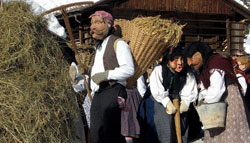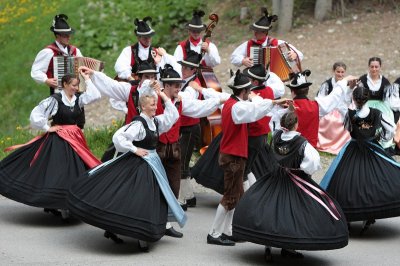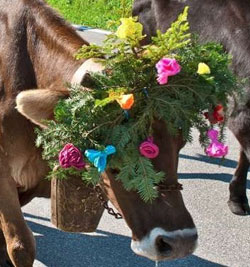Sappada Dolomiti
Summer and winter tourist resort in the heart of the Dolomites
Summer and winter tourist resort in the heart of the Dolomites

The carnival
The Sappada Carnival takes place for three consecutive Sundays: the "Sunday of the poor" (Pèttlar sunntach), in which it is used to dress discharged clothes and carry out the most humble jobs to earn a living; the "Sunday of the peasants" (Paurn sunntach) which recalls the ancient agricultural work and the "Sunday of the lords" (Hearn sunntach), expression of the wealthy class and occasion of display of the most refined costumes.
The masks wear appropriate clothes depending on the Sunday and staged funny situations involving spectators and people in the houses they visit. All speak in falsetto (goschn) not to be recognized.
Other characteristic days of the period are "Fat Thursday" (Vaastign pfinzntòk), "Fat Monday" (Vrèss montach), a day entirely dedicated to rolled, the typical sappadina mask, and the "Fat Tuesday" (Schpaib ertach), with the mask competition on skis for children and adults, the No club, whose first edition dates back to 1934.

Folk Group
The ancient crafts of the village have been reworked in the dances of the folk group Holzhockar, the loggers, who make the spontaneity of local folklore known in the squares in Italy and in Europe.
the group performs mimic dances of the life of the past; with their typical sappadini costumes and the joy of dances and music enliven the festivals and festivals of the town.

Transhumance
SAPPAMUKKI
the tradition of returning cows from pastures is now celebrated in September when the cattle descend from the Val Sesis festively decorated, in a folkloric parade that ends with music, dances and samples of typical products.